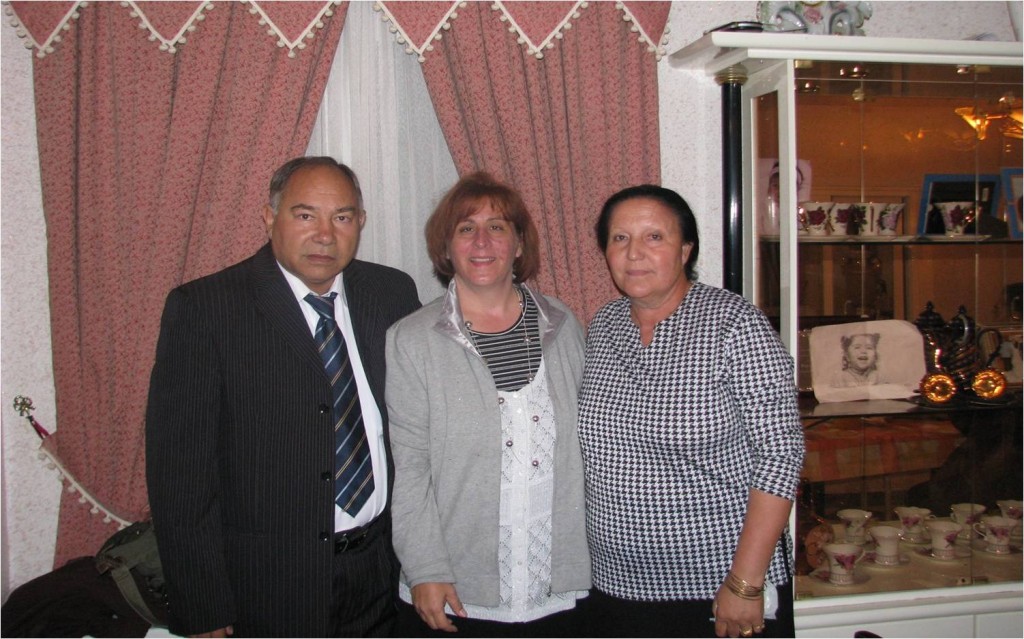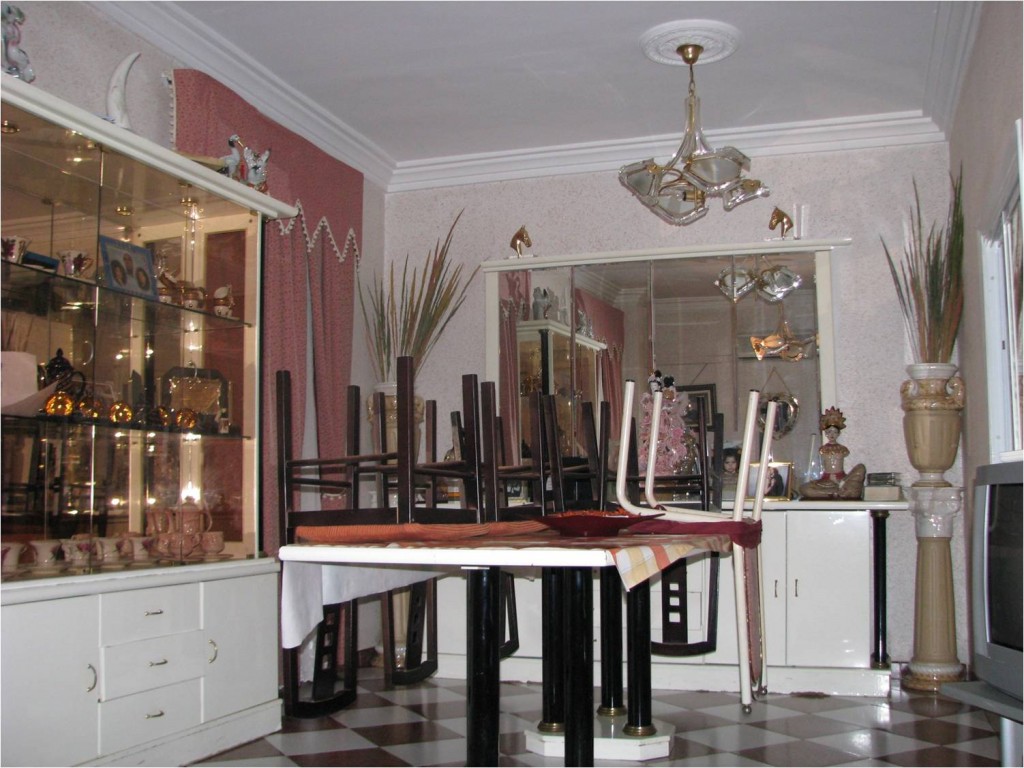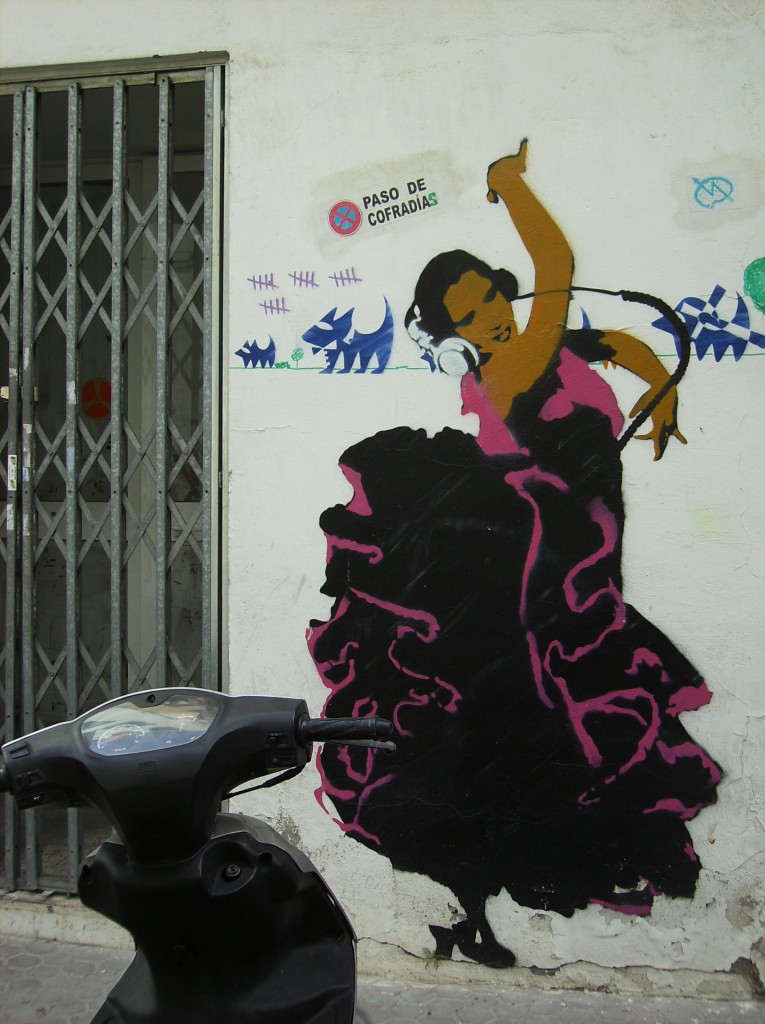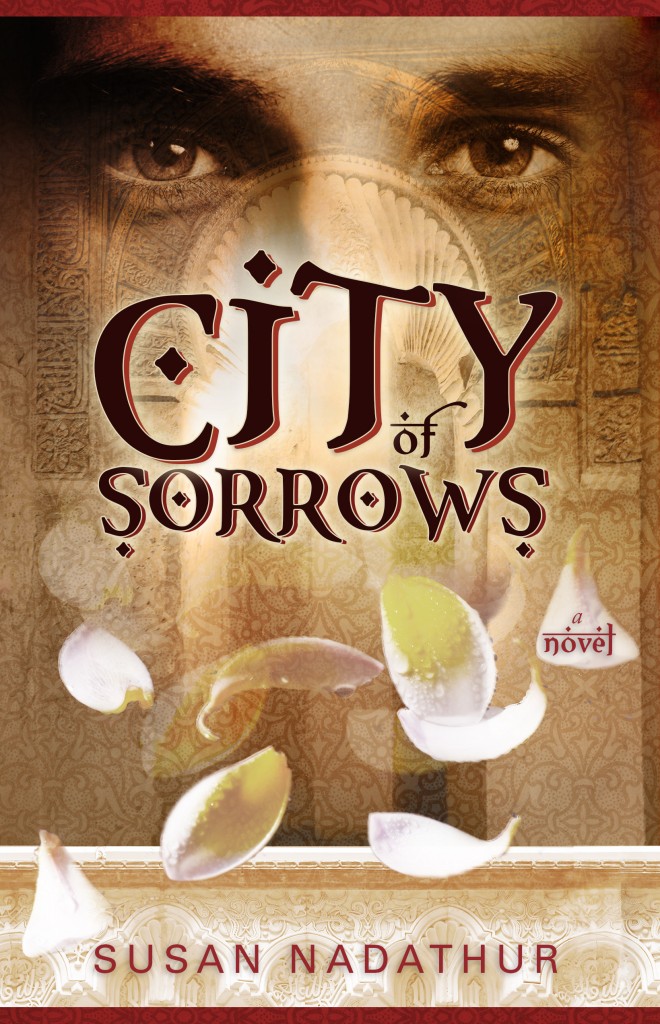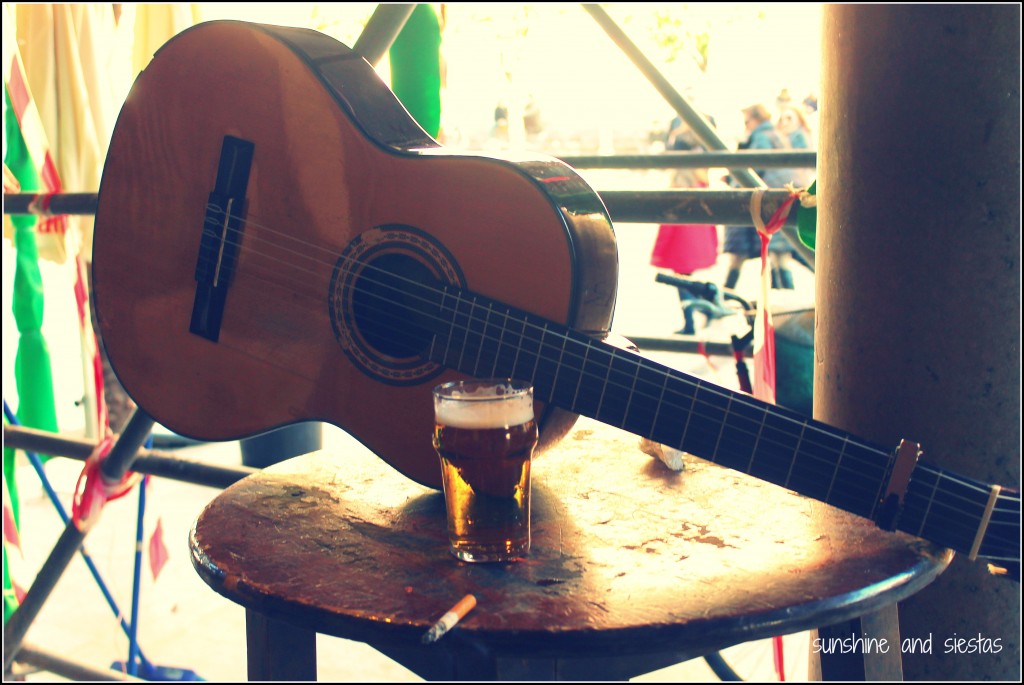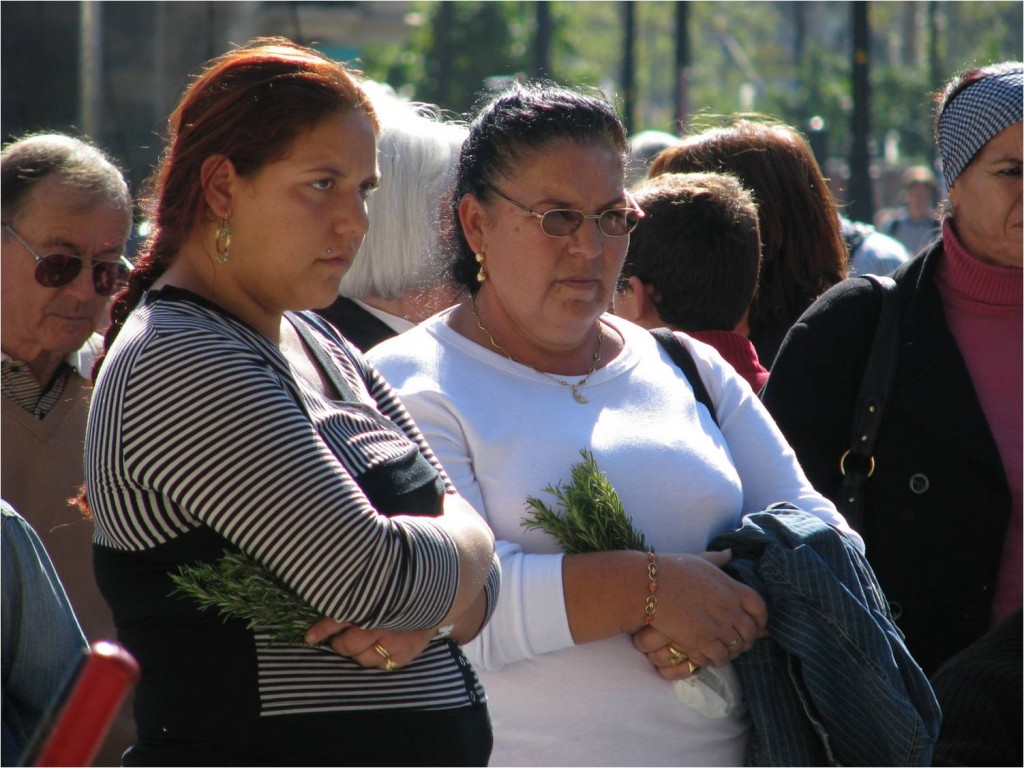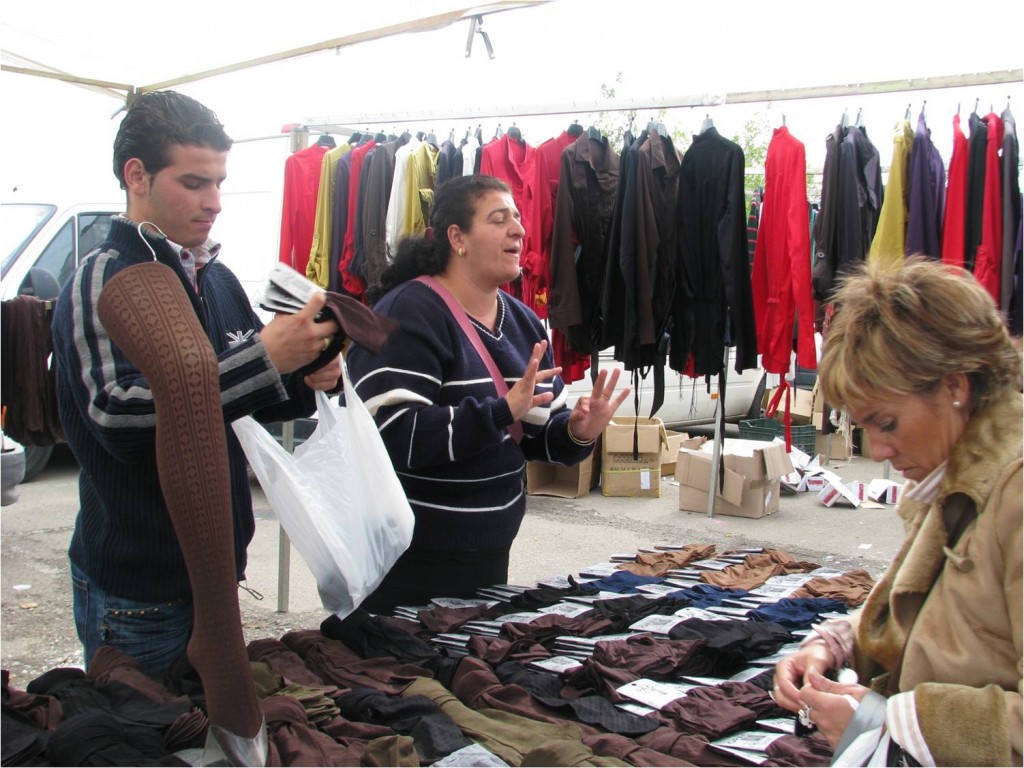Where we last left off with Susan Nadathur, author of the novel ‘City of Sorrows’ about Seville’s Gypsy culture, she was telling us about Gypsy Culture as seen by outsiders. To research her book, Susan lived with a family in Las Tres Mil Viviendas, and what she found out was surprising.
How did you end up living with the Gypsies in Spain? And what sticks out most about their culture?
Living with the Gypsies has become part of my life story. But it sort of got fleshed out when as a young woman I traveled to Seville after graduating from college in 1982. While there, I met the man who is now my husband. Govind is a first generation Indian, which led to some interesting experiences in Spain—mostly because many Spaniards confused him for a Gypsy.
As you may know, the Gypsies trace their ancestry back to the Punjab region in northern India, whose people journeyed from India to Europe in the 15th century. If you look at the features of many Gypsies today, they share many common physical characteristics with East Indians, so the confusion is understandable. Anyway, after having lived through some interesting, and at times painful experiences with Govind, I became curious about the Gypsies. I wondered why there was so much negative energy surrounding the culture. Years later, I started to write the book that is now City of Sorrows. Because I felt it was my responsibility to understand the culture well, so that I could write about it with clarity and avoid the stereotypes, I returned to Spain in 2008 and found my way into a Gypsy home. How that happened is an interesting story which begins and ends with a Spanish Gypsy pastor, Pepe Serrano.
To make a long story short, I ended up in a Pentecostal Gypsy church called La Iglesia Dios Con Nosotros (God with Us), in one of the most sordid sectors of the city (Las Tres Mil Viviendas). But not once did I ever feel unsafe. The congregation embraced me, though kept me at a distance whenever I asked questions about their culture. Too many years of marginalization and oppression had made them wary of foreigners. But as the weeks went by, and they began to trust me, my experiences began to change. I was invited into people’s homes, into their lives. Finally, I was asked to leave the apartment I had rented in Seville and invited to live with Pastor Pepe and his family in their home on the outskirts of Seville. Once I moved into Pastor Pepe’s home, I no longer had to ask questions. I only had to live as part of a family to understand the people I was writing about.
As far as what sticks out most about Gypsy culture is the way that they are able to maintain their traditional values without being remarkably changed by mainstream Spanish society. For example, the Gypsies place a high value on two things: a woman’s “honor” and respecting the elderly. In a society where premarital sex is prevalent and the elderly are placed in homes to be cared for by strangers, this adherence to what might be considered ‘traditional values” is inspiring. I was also impressed with how children obeyed their parents, with no back talk and/or disrespect. While my Spanish friends endured all the “talking back” and disrespect rampant in modern society, the Gypsy children I met (from all ages from toddler up to young adult) obeyed their parents and did what was asked—even if they didn’t agree with what their parents were asking of them.
One of the most surprising things I learned while visiting Las Tres Mil was that the Gypsies lived far better, and in much cleaner environments, than I had imagined. To tell you the truth, I was at first skeptical about taking a bus into Las Tres Mil. I’d heard all the horror stories about the poverty and the crime. My first impression of the neighborhood supported my perceptions. Piles of garbage lined the streets, and the buildings smelled of urine and alcohol. Once off the bus, I found myself thinking that I was going to be entering a ramshackle, run-down apartment complex. What I found instead was a beautifully maintained, humble yet comfortable home.
And what amazed me most was the family dynamic I experienced inside that humble home. The women cooked and served, the men socialized and were served. That might go against what most of us modern women expect in our homes, but in reality, it was a loving, functional way to be. Everyone laughed and shared. No one felt imposed upon or used. After dinner, the women got to work again, cleaning up the pots and pans, sweeping the floors, and then finally, sitting down to watch TV, all together as a family. It was one of the most beautiful experiences I have ever had.
Can you describe the writing process for City of Sorrows?
The writing of City of Sorrows was an almost eight-year process which began in the year 2004, when I told my husband “I’m going to write a novel.” Little did I know then how difficult that task would be. For the first two years after making that energetic declaration, I devoured books on the craft of fiction, books like Stephen King’s On Writing and James Scott Bell’s Plot and Structure. I wrote at least ten drafts, cutting, editing and revising as I went along. Then I read more articles, books, and blog posts about characterization, style, voice, and every other conceivable topic. Then with all this new knowledge, I went back to rewriting. Several drafts later, I finally hired a professional editor. That was when I thought I was close to being done with the manuscript. But then I decided to revisit Spain, for research purposes, where I lived on and off between 2008 and 2011. Much of that time, I lived with pastor Pepe and his family. I thought I was going to complete the manuscript in the fall of 2011, but to my horror, I didn’t write a single word of my novel the whole time I was in Spain. I spent all my time hanging out with the families and writing all these wonderful experiences in my journal. Then in 2012 City of Sorrows was finally complete and published by a small, independent press in Puerto Rico.
What’s next for you as a writer? Any other projects planned or underway?
I am currently working on a young adult paranormal romance about the downside of temptation and desire, the fragility of being human, and the challenges of being different in the Hispanic Caribbean. It is set on the island of Puerto Rico and has the working title Dante’s Kiss.
Interested in winning your own copy? Susan is an avid follower of Sunshine and Siestas and has offered one copy, either digital or paperback, to another reader of this blog. We’re interested in knowing how you feel about Gypsy culture, regardless of whether or not you’ve lived in Spain.
rafl/display/ca3df24/” rel=”nofollow”>a Rafflecopter giveaway
The winner will be randomly chosen from the entries on November 22nd, in honor of the Spanish celebration of El Día de los Gitanos Andaluces. Susan is offering City of Sorrows at a promotional price of $9.59 for the print book and $4.19 for the Kindle book, throughout the month of November. You can purchase on Amazon (City of Sorrows on Kindle or City of Sorrows Paperback) or via Susan’s author website. You’ll learn that it goes beyond flamenco and jaleo – Gypsy culture is passion, devotion, tradition.
